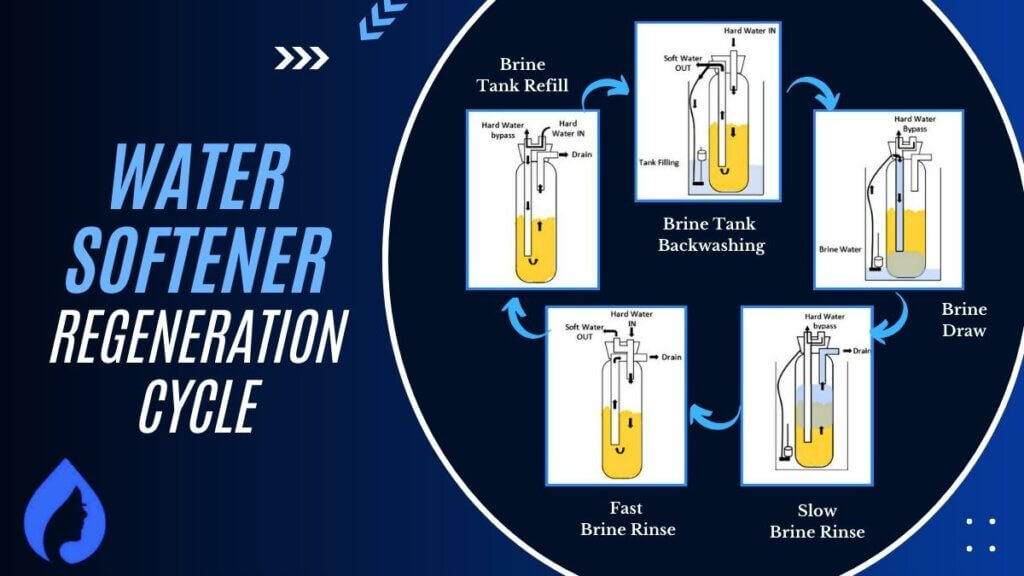
The regeneration cycle is when calcium and magnesium-saturated resin beads are removed by brine water and then replenished with sodium ions for effectively softening the water.
It involves five stages:
Continue reading for a detailed walkthrough of the 5 stages of the water softener regeneration cycle.
🖐️What Are the 5 Stages of Water Softener Regeneration?
| Stage | What Happens | Duration | Flow Rate Needed |
| Brine Tank Backwashing | Removes the accumulated dirt and particles | 10 minutes | 6 GPM |
| Brine Draw | Introduction of Brine to the resin tank | 30-40 mins | 1 GPM |
| Slow Brine Rinse | Removes excess salt and hardness ions with a slow rinse | 15-20 mins | 1 GPM |
| Fast Rinse | Removes traces of ions left in the resin tank | 50-60 mins | 2 GPM |
| Brine Tank Refill | Preparation of fresh brine solution for the next cycle | 5-6 mins | N.A. |
Let’s look at each stage of the regeneration process in little detail.
🗑️Brine Tank Backwashing
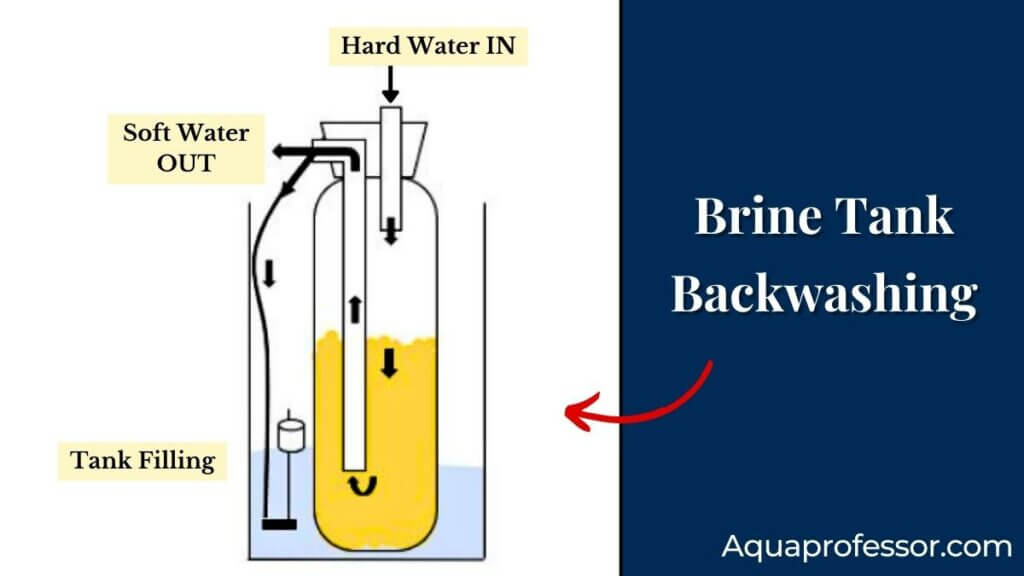
This is the first stage in the REGEN process.
In this step, feed water passes through the control valve and the central tube, eventually reaching the resin bed’s bottom.
As the water rises from the bottom of the resin bed, it loosens the resin mattress, collects all the dust, debris, and other contaminants, and leaves from the top of the tank.
This stage usually takes around 10 minutes at a fast flow rate of 6 GPM.
Also Read: How Many Grain Water Softener Do I Need?
👉Brine Draw
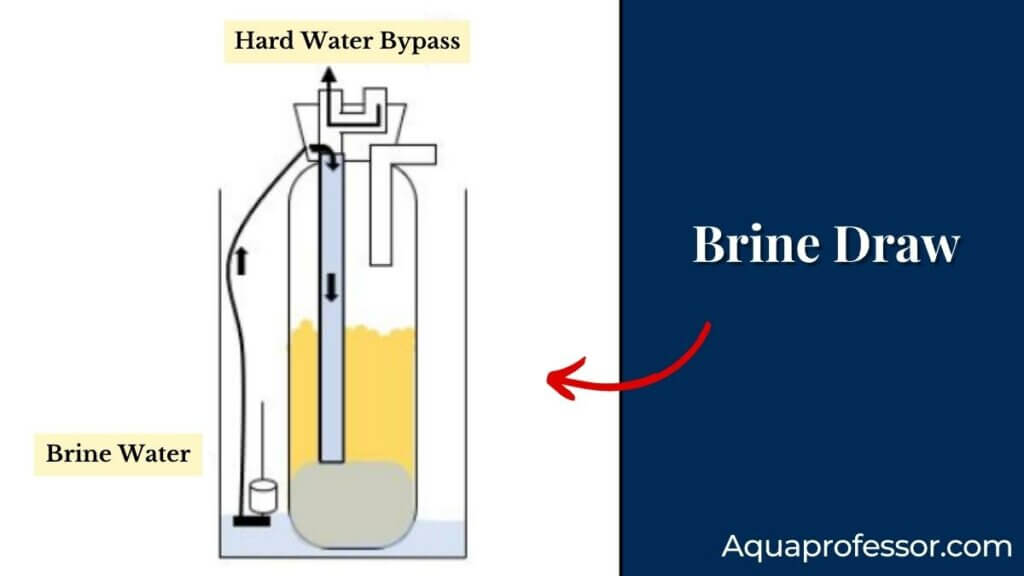
The next stage is the Brine Draw cycle, which involves transferring a concentrated salt-water solution from the brine tank into a resin tank.
Mechanism:
Through the ion exchange process, sodium ions from the salt brine exchange with calcium and magnesium ions (hardness minerals) and replenish the beads for another softening cycle.
The brine flows from the resin bed into the centre tube and drains out of the softener.
This cycle takes 30-40 minutes to complete at a flow rate of 1 GPM.
Also Read: Best Water Filter For Calcium
💦Slow Brine Rinse
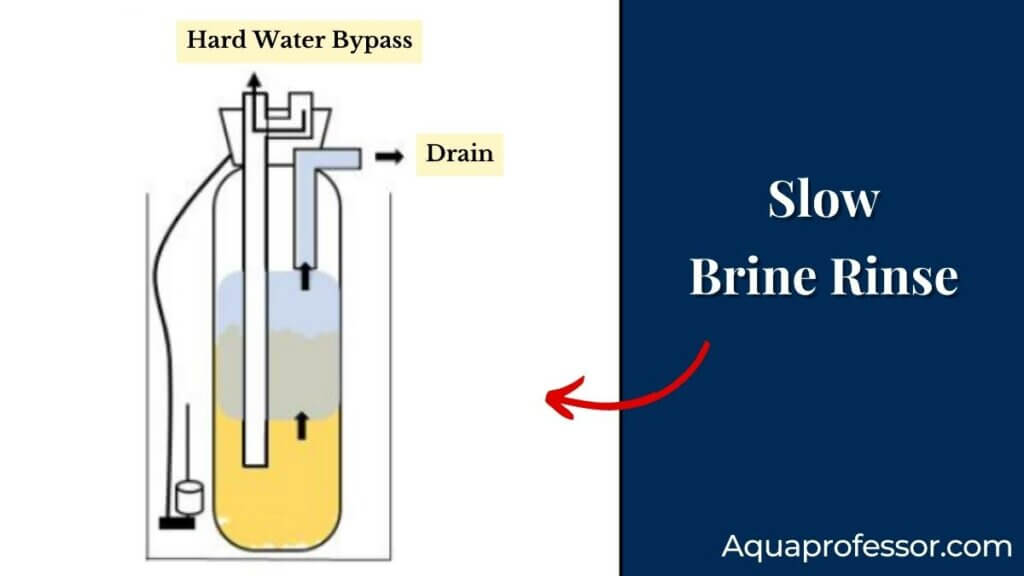
After the brine draw, a slow brine rinse comes. In this stage, fresh water from the water supply is poured onto the resin bed through an injector or eductor valve.
It takes up the remaining salt solution and hardness mineral to the collector at the bottom of the water softening system in the resin tank and from there to out of the softener. Hence, it cleans the resin tank.
This stage takes 15-20 minutes at a flow rate of 1 GPM.
Also Read: Best Water Softener Salt
🚿Fast Rinse
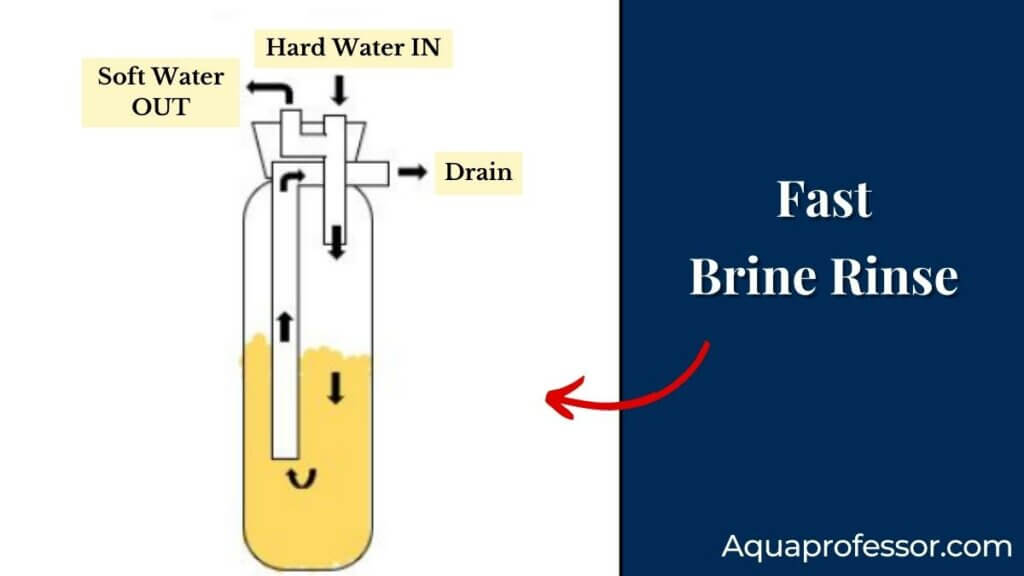
The fast rinse stage comes directly after the slow rinse, where fast-flowing water compacts the loosen-up resin bead. It also removes the traces of the salt solution and hardness minerals (calcium and magnesium) in the resin tank.
This cycle takes around 50-60 minutes at a flow rate of 2 GPM.
Also Read: How Do I Know if My Water Softener Resin Needs Replacing?
🔁Brine Tank Refill
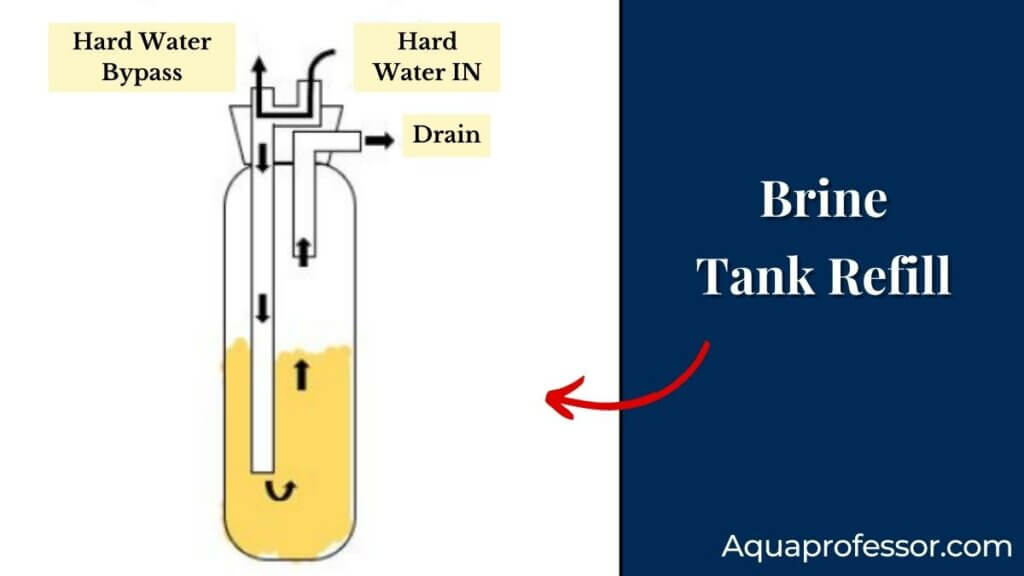
In this last stage, the salt brine is again prepared to replenish beads with sodium ions in the next REGEN cycle.
Here, the water flows directly into the brine tank (with salt pellets) from the building water supply, and then the brine solution is prepared.
This cycle typically takes about 5-6 minutes to complete.
The water softener goes through all five steps in the REGEN cycle to convert hard water into soft water.
These cycles are crucial because they keep resin beads fresh and improve their water softening process capacity.
It is generally advisable to avoid using water while water softener regenerates since hard water may fill and damage the water heater. It’s best to set REGEN at 2 AM when no one uses water for all five stages to complete smoothly.
Also Read: How To Remove Limescale Deposits
💡Water Softener Regeneration Cycle: FAQs
How long does a regeneration cycle on a water softener take?
The water softener regeneration process takes approximately 2 hours to regenerate properly.
You should not use your water softener during REGEN as it can cause buildup inside the water heater. So, better set the water softeners’ regeneration cycle to run at 2 AM when no one uses water.
How do I know if the water softener is regenerating?
Here are some signs that the water softener system is regenerating:
1. Hum sound of working motor
2. Sound of water flowing down the drain
3. Dropping salt level
Should you use water when the water softener is regenerating?
No, you should not use water when the water softener is regenerating, as hard water will bypass the softener and cannot function properly.
This hard water may flow through pipelines and even appliances, which might cause buildup problems.
What is backwash on a water softener?
In backwash, the water from the supply reaches the bottom of the resin tank and rises. It causes the resin mattress to loosen up and eliminate the accumulated dirt, impurities, and sediments from the tank in 10 minutes.
How often should my water softener regenerate?
Your water softener should regenerate every 2-3 days, but this depends on several factors:
1. Incoming water hardness
2. Iron and manganese concentration in water
3. Resin Tank capacity, and
4. How much water is used every day.
It’s best to opt for demand-initiated water softeners that can REGEN based on water usage rather than manual programming.
Adarsh is a Health & Nutrition Sciences graduate with expertise in environmental health. He is associated with ventures like Glacier Fresh Filter and Simpure Filter Systems. Through Aqua Professor, he intends to provide helpful information to every home to help them make smarter decisions.
